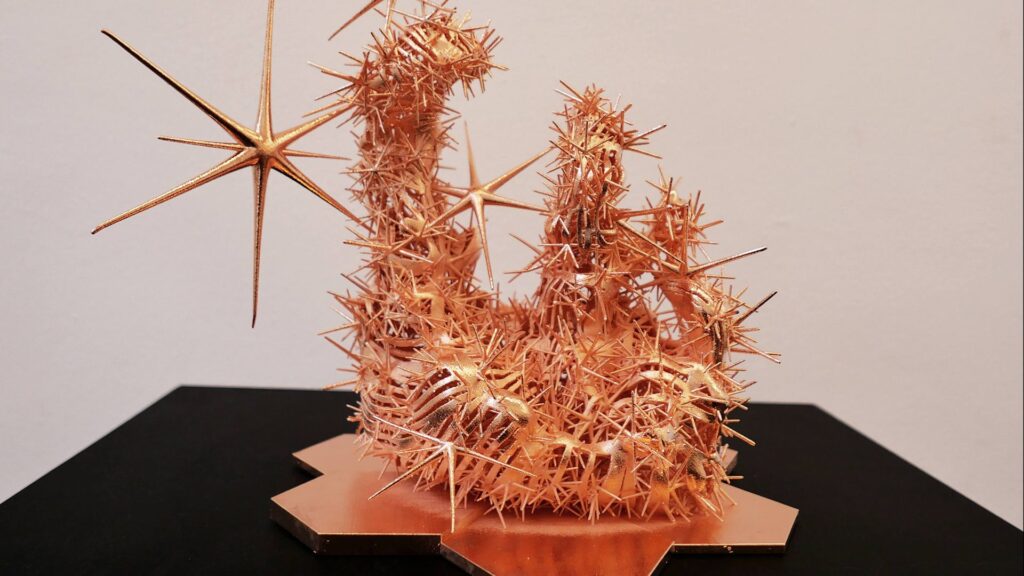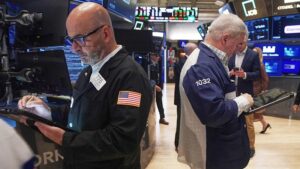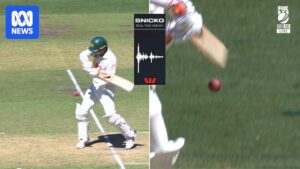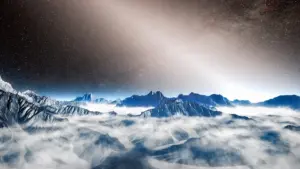
The James Webb Space Telescope (JWST) continues to inspire awe with its breathtaking views of the cosmos, captivating both scientists and artists alike. Digital artist Ashley Zelinskie has channeled this inspiration into her latest exhibit, “Unfolding the Universe: Wandering Through Time and Space,” which opened at the Torch Gallery in Amsterdam on September 6 and will run until October 26. This exhibit, the second in a three-part series, showcases new art pieces that reimagine celestial phenomena through the lens of the JWST.
The exhibit features Zelinskie’s interpretations of iconic cosmic structures such as the Pillars of Creation and the Cat’s Paw Nebula, alongside an innovative take on gravitational lensing. In collaboration with Out of Seam, the exhibit also includes large-scale textiles and an immersive ESA Webb VR experience, inviting visitors to explore the universe from multiple artistic perspectives.
The Artistic Journey Inspired by Space
Zelinskie’s fascination with space began in 2016 when she started collaborating with scientists and astrophysicists from NASA. Her work has since evolved to include sculptures representing the four-dimensional fabric of space and time, as well as virtual reality art inspired by the JWST. Her contributions have been recognized globally, with pieces exhibited at the Whitney Museum of American Art and included in the U.S. Department of State’s Art in Embassies Program.
In an interview with Space.com, Zelinskie shared how her residency at SETI and the Allen Telescope Array sparked a profound connection to space, transforming it from a distant subject into a tangible medium for her art. “Space and science stopped being a distant subject and became a material I could work with,” she explained.
From New York to Amsterdam: A Global Artistic Dialogue
The transition from New York to Amsterdam marks a significant chapter in Zelinskie’s artistic journey. Her decision to stage the latest exhibit in Amsterdam was influenced by the city’s vibrant intersection of technology and contemporary art, as well as its proximity to the European Space Research and Technology Centre (ESTEC).
“Amsterdam was a natural convergence of people and place,” Zelinskie noted, highlighting the city’s audience as being particularly attuned to the dialogue between advanced technology and art. The exhibit also emphasizes the European Space Agency’s (ESA) contributions to the JWST mission, underscoring the international collaboration that made the telescope’s success possible.
Engaging with the Scientific Community
To enhance the exhibit’s educational impact, Zelinskie invited members of the ESA to speak at the gallery. These talks, led by experts such as Lorenzo Speri and Nora Luetzgendorf, provided visitors with deeper insights into gravitational waves and the JWST’s mission. The discussions were complemented by Zelinskie’s guided tours, which explored the scientific themes embodied in her sculptures.
The exhibit also featured a live conversation with Maximilian Guenther on exoplanets, broadcast on Echobox, which expanded public discourse on the search for extraterrestrial life. These interactions not only enriched the exhibit but also ensured that the artworks remained in honest dialogue with the scientific missions they represent.
Looking Ahead: The Final Chapter
The third and final installment of the “Unfolding the Universe” series will shift its focus to the Canadian Space Agency’s role in the JWST mission. Scheduled to include new copper-plated, 3D-printed sculptures and a companion VR experience, this chapter will highlight Canada’s contributions to the telescope’s guidance and stability.
As Zelinskie continues to explore the intersection of art and science, her work invites audiences to engage with the cosmos in new and meaningful ways. By transforming scientific data into tangible experiences, she opens up the conversation of exploration to a broader audience, fostering a deeper appreciation for the wonders of the universe.







